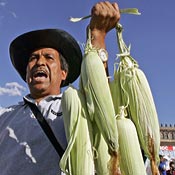Nine European nations announced at the end of January they would enter into a project that would help them to capture renewable energy resources. This “supergrid“ will connect different energy sources by cables running under the sea. The cables will connect energy including
The idea is that energy would be captured where it is available, and then could be channeled to a place where energy was needed. For instance, if the wind farms were creating a lot of energy in England, but the solar panels in Germany were not capturing a lot of power, energy from England could be sent to Germany through the underwater cables.
The new grid system will help to reduce Europe’s dependence on fossil fuels, assisting in the EU’s goal to provide 20% of their energy from renewable resources by 2020. The development of the grid will also create environmental-friendly jobs— which will stimulate the European economy. Participating nations are:
- United Kingdom
- Germany
- France
- Belgium
- Netherlands
- Luxembourg
- Denmark
- Sweden
- Ireland
The estimated cost of the grid is $40 billion. And, it is hoped that this North Sea grid would be the first step towards a grid that would serve all of Europe.
Picture sources:










